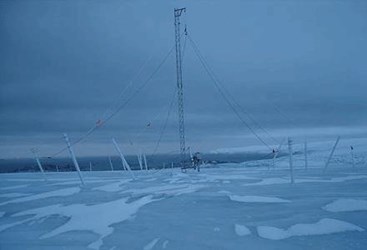DARPA Developing Smaller VLF Antennas
By Jof Enriquez,
Follow me on Twitter @jofenriq

The Defense Advanced Research Projects Agency (DARPA) says its scientists are looking to downsize existing antennas that handle very low frequency (VLF) signals in an effort to improve long-distance wireless communications.
DARPA plans to conduct research "in the areas of materials, mechanical actuation, and overall transmitter architectures to address impedance matching, power handling, signal modulation, scalability, and other system level considerations" in order to improve upon current antenna designs, which require very large transmitter structures, according to Network World.
Standard electrically small antennas are as small as 1/10th of the electromagnetic (EM) wavelength, but DARPA wants to build newer antennas as small as 1/10,000 of the EM wavelength, or by at least a factor of 103 smaller than the current state-of-the-art (SOA), reports the publication, citing a Request for Information.
Smaller antennas capable of transmitting ultra-low or VLF signals can have critical civilian and military applications. A VLF-based system is currently being tested by DARPA and the United States military as a backup to the Global Positioning System (GPS).
DARPA lately has been much engaged in efforts to improve wireless communications technology.
In April, it announced the successful integration for the first time of miniaturized, highly specialized electronic components called circulators into standard silicon-based circuits. The development could double radiofrequency (RF) capacity for wireless communications, and makes it possible to build smaller, less expensive and more readily upgraded antenna arrays for radar, signals intelligence, and other applications.
DARPA also recently launched the Spectrum Collaboration Challenge, a competition to develop advanced radios with machine-learning technologies that allow dynamic spectrum sharing in today's increasingly congested spectrum environment, which is brought about partly by the decades-old practice of assigning users exclusive use of specific frequencies.
DARPA is coordinating with the National Science Foundation (NSF) to promote the participation of up to six U.S.-based student teams for the duration of the three-year Spectrum Collaboration Challenge. The teams will be trained and advised by NSF-funded scientists and engineers who are experts in wireless spectrum research.
The winning team after the championship round in 2019 gets the grand prize of $2 million, while the second and third best teams will receive $1 million and $750,000, respectively.
